Scientific name Diapensia lapponica Rank Species | Genus Diapensia Higher classification Diapensia | |
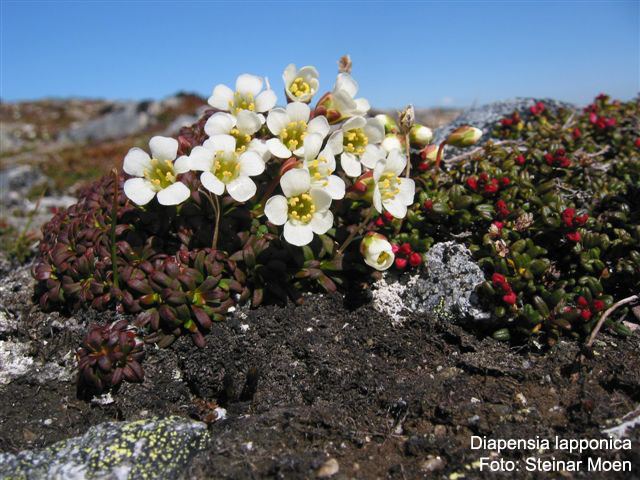 | ||
Similar Diapensiaceae, Kalmia procumbens, Diapensia, Rhododendron aureum, Leucogenes | ||
Diapensia lapponica (pincushion plant) is a plant in the family Diapensiaceae, the only circumpolar species in the genus Diapensia, the others being mainly in the Himalaya and on mountains in southwestern China (the evolutionary heartland). This species likely became Circumboreal-circumpolar [Arctic–alpine] after it jumped to arctic habitat from North China and Russia. The most likely candidate for ancestor is a white-flowered D. purpurea (Day R.T. 2003. Diapensia on Cheju Island, South Korea and Musings on Origins. Sarracenia 11(3):29-31.) The plants grow on exposed rocky ridges that are kept free from snow by high winds. Diapensia is extremely slow and low-growing and cannot compete with plants that over top it. The plant is very sensitive to higher temperatures (global warming a lethal problem in Sweden) and so is often in misty foggy habitat (R. Day thesis). It usually dies when transplanted to lowland gardens (trials in Newfoundland, by R.Day) and so this is not recommended. Cold-treated or wild and winter-collected seed will germinate indoors. The seed and leaves are high in lipids.
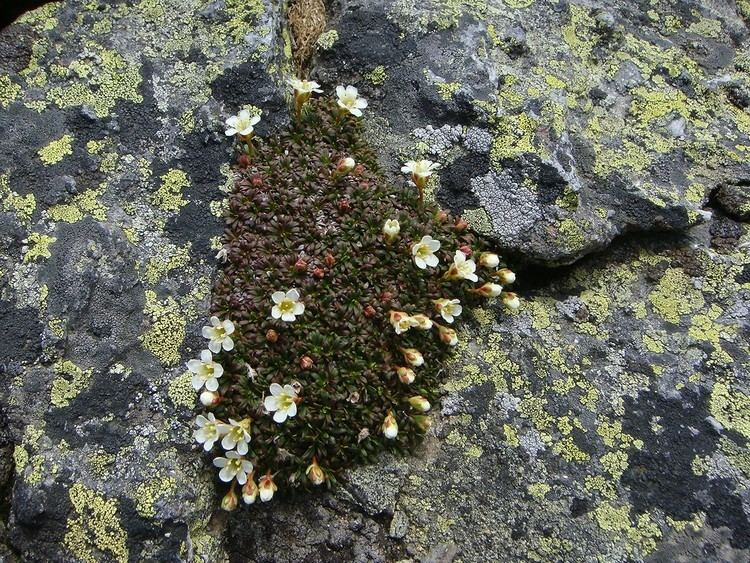
It is a small cushion-forming evergreen perennial shrub, up to 15 centimetres (6 in) in height, and can trap heat in the dome (R. Day thesis). It has oval blunt leathery toothless leaves, up to 1 cm (0.4 in) long, which are arranged in dense rosettes. It bears solitary white flowers (rarely pink), on stems up to 3 cm (1.2 in) tall.
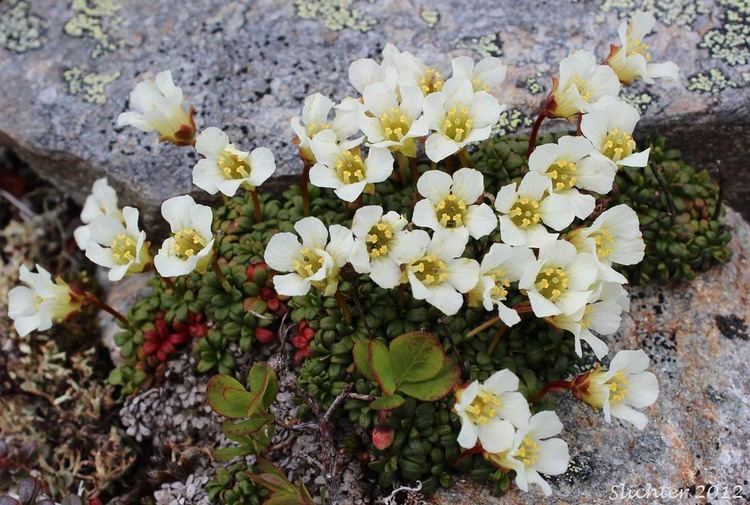
It could be aged by counting growth-rings or clump diameter, and on this basis, many Canadian plants are thought to live to over a century or two. See also the thesis by R. Day at Memorial University Newfoundland.
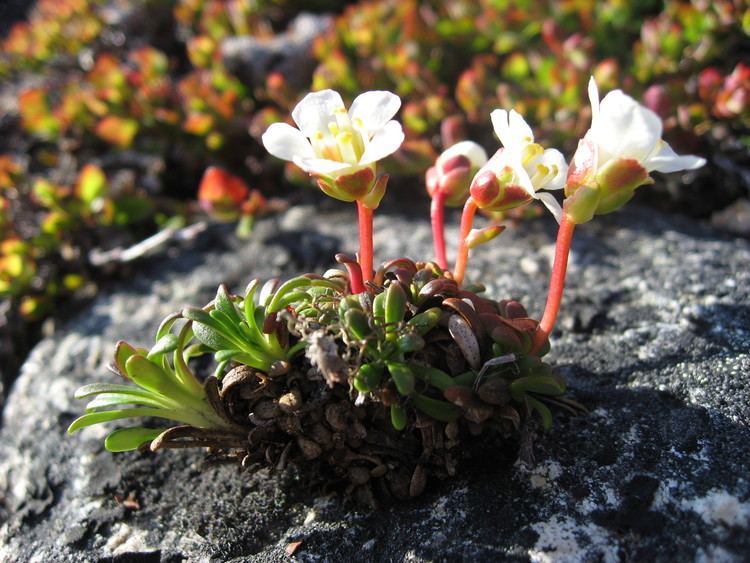
In places such as Newfoundland an early June and later, (often) August blooming period occurs on different plants. Day R.T and Scott P.J. 1981. Autecological aspects of Diapensia lapponica in Newfoundland. Rhodora 83: 101-109. It is not known if this is a genetic or environmental affect. Two blooming periods are known for other plants. It often involves flower buds being formed in the present or previous year (overwintering buds)(see R. Day thesis).
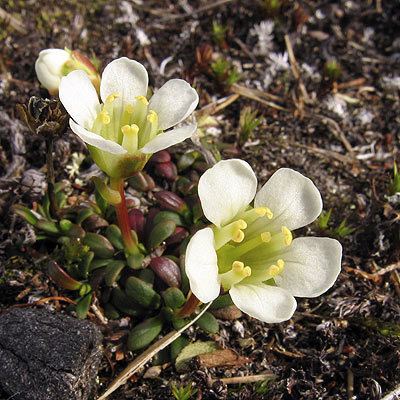
Two subspecies are recognised:
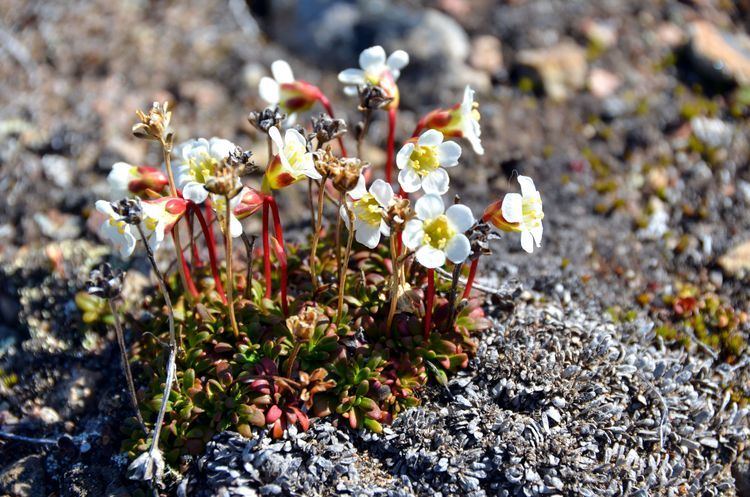
Status in Britain

In Britain, Diapensia is found only at a single site near Glenfinnan in Lochaber, the species' most southerly site in Europe. Here, the species occurs on acidic soil among stones on the ridge between the summit of Sgùrr an Utha and the adjoining hill called Fraoch-bheinn, at 760–780 metres (2,490–2,560 ft) above sea-level. Its total extent at this site is less than 5,000 square metres (1.2 acres). A total of 1,200 clumps or mats have been counted, and monitoring since 1980 has not detected any change in this population.
The discovery of Diapensia took place in July 1951; C. F. Tebbutt, a birdwatcher, found the plant, recognising it as "something different". Diapensia was one of a trio of Arctic plants discovered in Scotland in the early 1950s. Although no new species to Britain had been discovered in Scotland since Victorian times, in 1950, the Arctic plant Koenigia islandica had been found on the Isle of Skye, and in 1952, Artemisia norvegica was found on Cùl Mòr. A photograph of the plant by Robert Moyes Adam taken on 14 June 1952 (soon after the initial discovery) is held by the St Andrews University Library.
It flowers at this site in May or June, the exact time varying from year to year. Some sources state that the species is found at a second site, but recent sources state that this is not the case.
The plant is listed in the 3rd edition of the British vascular plant Red Data Book as vulnerable. It is also protected under Schedule 8 of the Wildlife and Countryside Act 1981.
